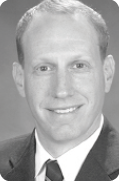
Recently, my nurse anesthetist gave a little extra intravenous midazolam to an anxious patient just prior to my starting the cataract procedure. During phacoemulsification, the nurse anesthetist noticed a slight decrease in the oxygen saturation to 94% and asked patient to take a deep breath. She did as instructed, causing her head and eye to move out of my view. I quickly centered the eye without difficulty, but the incident made me consider the potential ramifications of a seemingly innocuous comment.
After the case, I politely told the nurse anesthetist to consult me if she wants to instruct a patient to do anything and to allow me to convey the information. I explained that this approach will allow me to stop operating or exit the eye before the patient moves. The nurse anesthetist became somewhat defensive and replied that, in all her years of ophthalmic surgery, she had never seen anything bad happen because she had told a patient to take a deep breath. I explained that, just because no problem had yet occurred, it did not mean that one could never happen. Movement of a patient’s head or neck during certain parts of the cataract procedure could cause a major problem in the eye.
Scenarios like this one make me realize how compulsive, detailed-oriented, and vigilant we ophthalmologists are about minimizing risk during surgery. Ironically, many of us, including myself, do not bring that level of intensity to all aspects of our lives. My wife, for one, would be surprised to learn I have these qualities in the OR.
Of course, eye surgeons are not alone in their quest for perfection in their work. Such striving may be found among other medical specialists, engineers, aviators, athletes, and others. For some, the pursuit elevates them above their peers, as evident with basketball players Michael Jordan and Stephen Curry.
To approach perfection, we must continually push ourselves to places that we have not been before and that may not fit with our natural instincts. This effort is essential when it comes to our patients’ vision. We all must continue to step up our game, maintain our vigilance, look ahead, and take every possible measure to avoid risk if we are to optimize our patients’ surgical outcomes.
Robert J. Weinstock, MD, Chief Medical Editor




